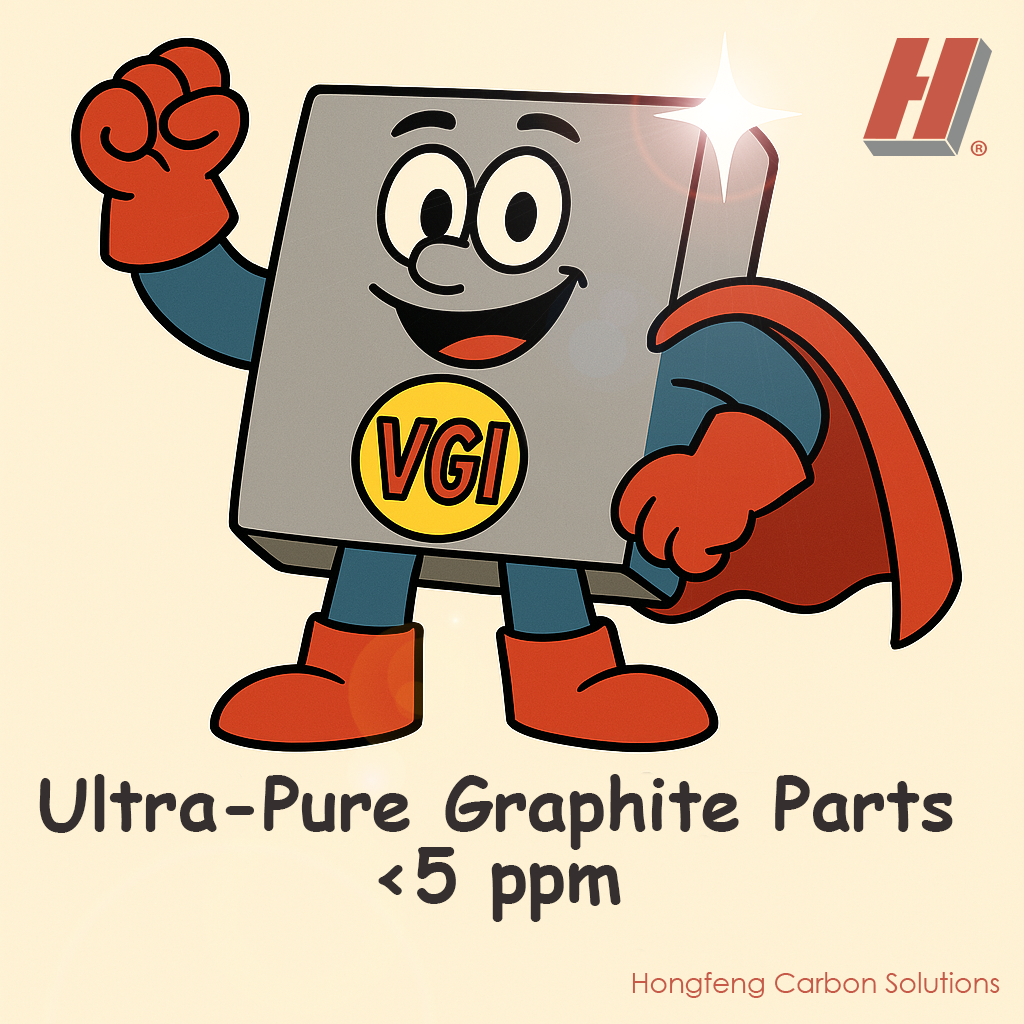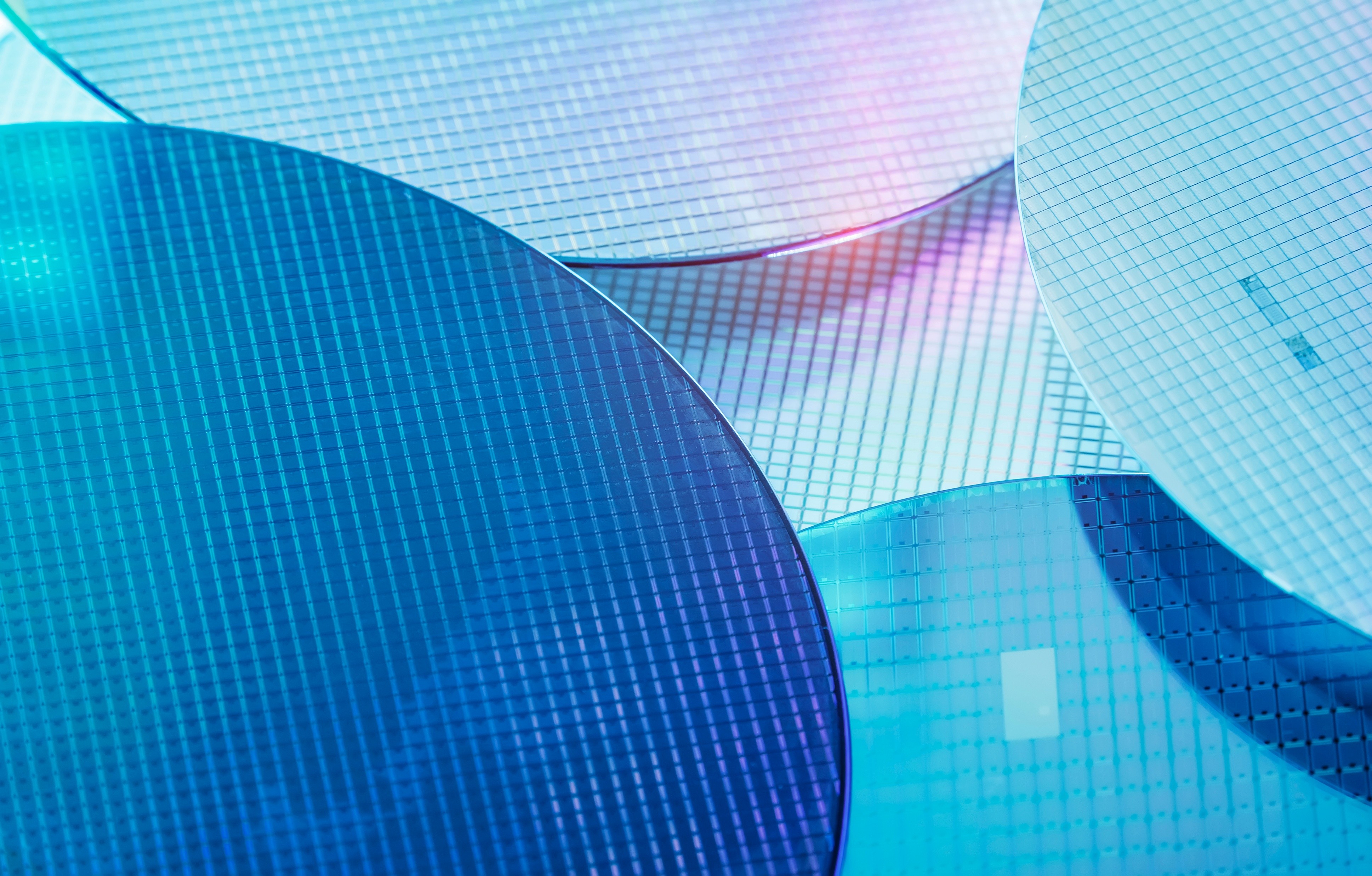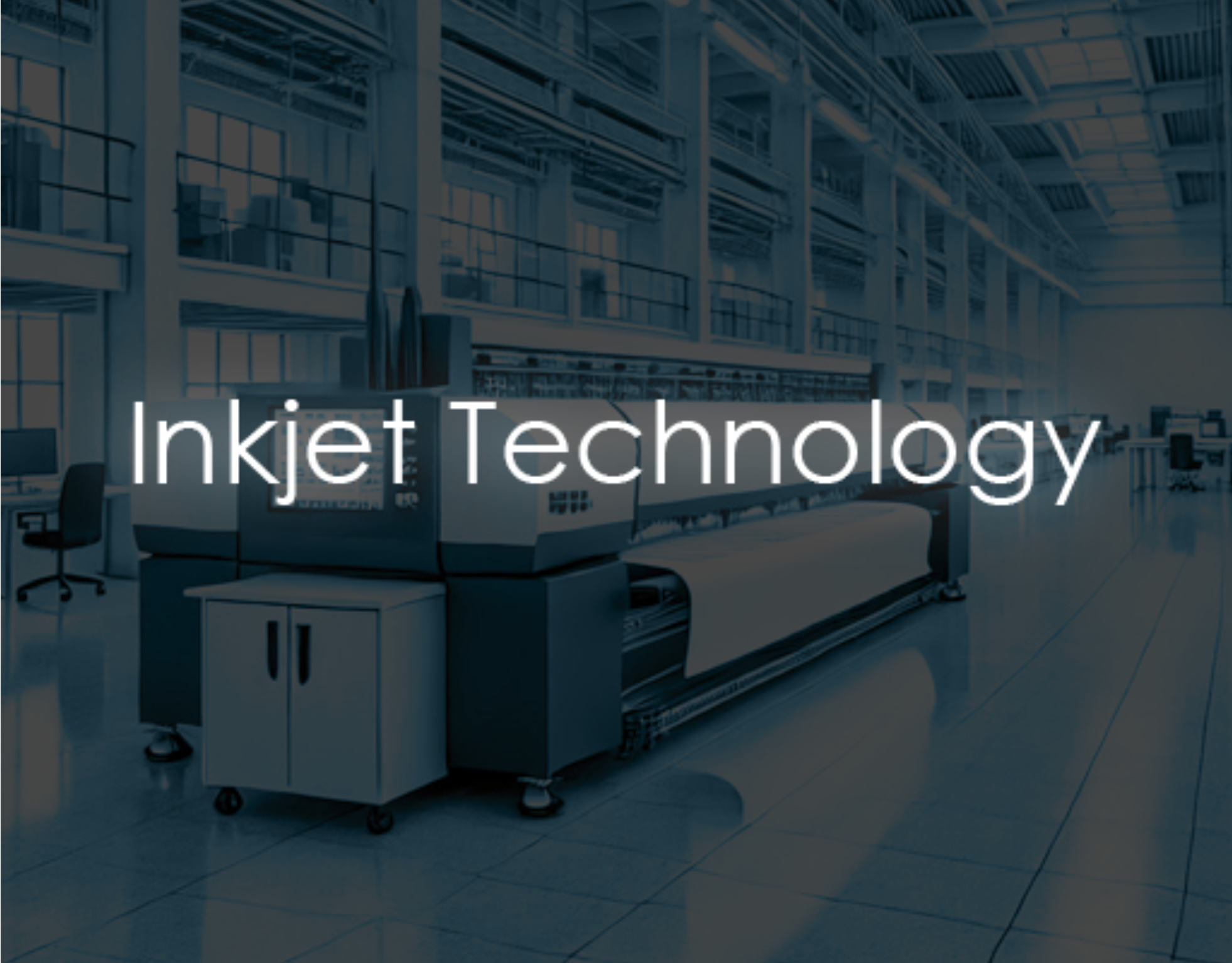When is pure graphite not pure enough?

When components operate under the most stringent purity, mechanical and vacuum conditions, manufacturers turn to ultra-pure vitreous graphite (VGI) rather than even high-purity isostatic grades. VGI’s combination of near-zero porosity, minimal outgassing, and ultra-low impurity levels makes it indispensable for components operating under the harshest conditions. It delivers unmatched performance where even trace contamination or material degradation could compromise yields. VGI parts maintain integrity in extreme environments, ensuring consistent, high-quality outcomes in semiconductor and thin-film manufacturing.
Processes like ion implantation, CVD/MOCVD, and vacuum‐furnace operations push materials to their performance limits. Even trace metal impurities at the hundreds-of-ppm level can negatively impact device yield, component life, and vacuum quality. Securing purity levels below 5 ppm is critical for three main reasons:
1. Ultimate Contamination Control
Semiconductor wafers tolerate almost zero metallic contamination. Even low levels of metals such as iron or nickel can diffuse into silicon during high-temperature steps, creating localized defects that kill transistors or cause leakage currents. Ultra-pure graphite (<5 ppm) eliminates this risk, preventing yield losses in advanced semiconductor fabs.
Processes like chemical vapor deposition (CVD), physical vapor deposition (PVD), and atomic layer deposition (ALD) occur in high-vacuum chambers. Materials with poorer purity levels can outgas, releasing volatile contaminants that compromise the vacuum integrity or deposit unwanted particles on wafers or films, causing defects.
Modern semiconductor nodes (e.g., 3nm or 2nm) involve atomic-scale features. A single impurity atom in a critical region can cause a short circuit, leakage current, or failure in a transistor. Ultra-high purity minimizes the risk of such catastrophic defects.
Thin films are often only a few nanometers thick and require pristine surfaces. Impurities at even “good” levels could introduce thousands of defect sites per square centimeter, ruining functionality.
Processes like crystal growth or annealing involve temperatures exceeding 1000°C. Materials with higher impurity levels may degrade, volatilize, or react, releasing contaminants. VGI’s sub-5 ppm purity ensures stability under these extreme conditions.
2. Minimizing Particle Generation & Outgassing
Graphite with higher impurity or residual porosity adsorbs process gases and sputters particles under ion bombardment or plasma exposure. Those particles land on wafers or masks, leading to defects. Vitreous graphite’s closed-pore structure and ultra-low ash content bring outgassing and particulate fallout to near zero, maintaining critical cleanliness levels in high-vacuum chambers.
Materials with “good” purity such as <200 ppm often still contain trace elements or compounds that outgas in vacuum environments, even at low levels. These can deposit on wafers or films, altering their properties. Sub-5 ppm ensures outgassing is negligible, maintaining a clean process environment.
3. Suppressing Oxidation & Extending Component Life
Metal impurities can catalyze graphite oxidation at elevated temperatures, accelerating erosion of susceptors, electrodes, or furnace boats. By cutting ash content below 5 ppm, VGI prevents formation of oxidation hotspots, doubling or tripling component lifetime in high temperature environments compared to less pure grades.

Hongfeng Carbon Solutions integrated production and material processing allows us to pass this value to our clients.
Below are key semiconductor and thin-film processes, and the specific parts that benefit from VGI’s near-zero porosity, minimal outgassing and sub-5 ppm purity levels.
Ion-Implantation Equipment include beam aperture, screens, electrodes
• Purity content below 5 ppm minimizes metallic and particulate contamination of wafers.
• Extremely low porosity prevents particle generation under intense ion bombardment.
• Higher mechanical strength endures ion-impact erosion better than untreated isostatic graphite.
https://www.hongfengcarbon.com/products/ion-implantation-high-purity
MOCVD & Epitaxy reactors: susceptor plates, satellite platforms, susceptor rings
• Vitreous carbon impregnation (VCI) boosts strength and cuts particle emissions in aggressive CVD environments.
• Virtually impermeable to reactive precursors, maintaining ultra-clean growth conditions.
• Enables reliable CTE matching with subsequent SiC or pyrolytic graphite coatings for longer life.
Photovoltaic Thin-Film Deposition: barrel susceptors, chamber liners, support pins
• CVD-deposited silicon carbide on VGI substrates creates an impervious barrier to corrosive gases and plasmas.
• Ultra-low porosity eliminates gas permeability, ensuring film uniformity and reducing particulate fallout.
While semiconductor fabs are the primary consumers of VGI material parts, other high-vacuum and high-temperature sectors also leverage its benefits:
• Analytical Instrumentation: Graphite furnace tubes in atomic absorption spectrometers demand VGI to avoid baseline drift from graphite outgassing.
• Vacuum Furnace Fixtures: Sample boats and liners rely on VGI’s minimal vapor pressure to keep vacuum levels stable.
• Aerospace Thrusters: Ignition electrodes and thermocouple sheaths in small-satellite thrusters exploit VGI’s combination of purity and mechanical resilience.
https://www.hongfengcarbon.com/industry/specialty-carbon
If you’re seeing unexpected particle defects, premature graphite erosion, or vacuum excursions in your high-tech processes, moving from a 20–200 ppm isostatic grade to sub-5 ppm vitreous graphite often solves the toughest contamination and lifetime challenges. The cost of defective wafers or films due to higher impurity levels is significant, as a single failed wafer can cost thousands of dollars.
Achieving <5 ppm ultra-pure vitreous graphite (VGI) parts require advanced purification processes that Hongfeng Carbon Solutions has developed and performs in-house. Engineers first machine the component from a premium isostatic graphite material and them follow a precise multi-step process to impregnate the graphite with special resins and undergo carbonization and vitrification at extreme vacuum and temperature conditions. A similar carbonization process is also used to produce and purify our Glassy Carbon (GC) materials. These techniques are highly specialized and proprietary, and materials have been verified by ash values and GDMS. Hongfeng Carbon Solutions integrated production and material processing allows us to pass this value to our clients.

Contact our team to discuss custom requirements for high-purity graphite and ultra-pure vitreous graphite (VGI) components. Hongfeng Carbon Solutions can provide rapid-prototyping and mass production.
Contact: sales@hongfengcarbon.com
Find Us: www.hongfengcarbon.com
---------------------------------------------
Hongfeng Carbon Solutions is a leading provider of machined graphite components, specializing in material science & development, and advanced precision machining of graphite and carbon-based materials. As graphite experts they provide solutions for a variety of high-performance industries that utilize specialized carbon-based components. They use high-grade isostatic graphite from premium suppliers like POCO, Mersen, Toyo Tanso, SGL, and more. Hongfeng Carbon has also developed many methods to process and enhance materials in-house.




